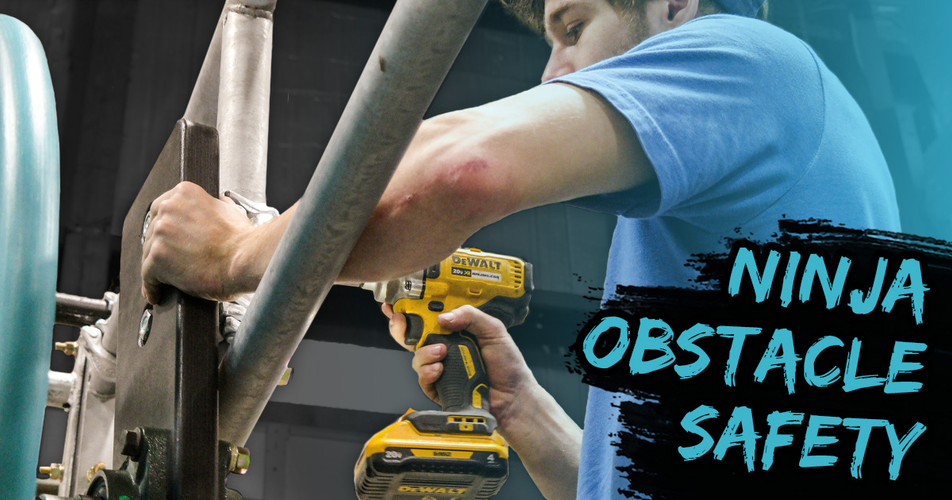Safety Tips: Obstacle Rigging and Padding
Posted by DGS Ninja on Sep 19th 2025
Safety Tips: Obstacle Rigging and Padding
Creating a Ninja Course isn’t just about fun and challenge, it’s about safety. Proper rigging, secure attachments, and adequate padding are essential to protect athletes and keep your course running smoothly. Here are key tips for different types of obstacles and safety measures.
Pipe Obstacles
Pipe-based obstacles require careful attention to prevent sliding or failure:
- Use locking collars: Always install locking collars when rigging obstacles on pipes. Even if your obstacle has a pillow block bearing, add a locking collar, as bearing set screws can loosen over time.
- Double connection points for vertical obstacles: When rigging vertical obstacles like skyhooks, J pipes, or vertical drop-downs, secure the obstacle at two points—one pipe above another—for added stability.
- Fail-safe installation: Position a locking collar above the top clamp and add a safety pin at the pipe’s top to create a fail-safe in case of slippage.
Strap Obstacles
Strap-hung obstacles need proper looping and secure connections to remain stable:
- Full loops: Always fully loop the strap through the obstacle so it ties securely to both the pipe and the obstacle. Half-looping can cause shifting during use.
- Single vs. double strap setups: Some obstacles, like trapeze bars, are tricky to hang with a single strap. In these cases, use two straps and connect the half-looped ends with a quick link.
- Quick link orientation: Keep the quick link threads on the bottom to prevent loosening during use. Be sure to recheck quick links often to confirm they remain tight.
Safety with Mats and Padding
Even with perfectly rigged obstacles, falls can happen. Proper mats and padding are essential:
- Post and column pads: Cover any exposed rigging posts, uprights, or columns with protective padding to reduce injury risk from accidental contact.
- Landing zones: Place mats or foam blocks beneath high-risk obstacles, swings, and dismount areas. Ideally this covers underneath your entire ninja rig and beyond.
- Coverage: Ensure mats extend beyond the expected fall trajectory.
- Thickness: Use mats appropriate to the obstacle height and athlete skill level. Higher obstacles require thicker or layered padding.
- Maintenance: Inspect mats regularly for signs of wear, rips, compression, or gaps, and replace them if compromised. For inflatables, check for leaks and replace when necessary.
General Safety Tips
- Regularly inspect all rigging hardware, mats, straps, and obstacles for wear or loosening.
- Keep course layouts age- and skill-appropriate. Young athletes may need lower heights and wider spacing.
- Educate athletes on proper technique and encourage them to use controlled movements to reduce risk.
By following these tips for pipes, straps, and padding, you can create a Ninja Course that is both fun and safe, giving athletes confidence while minimizing risks.


